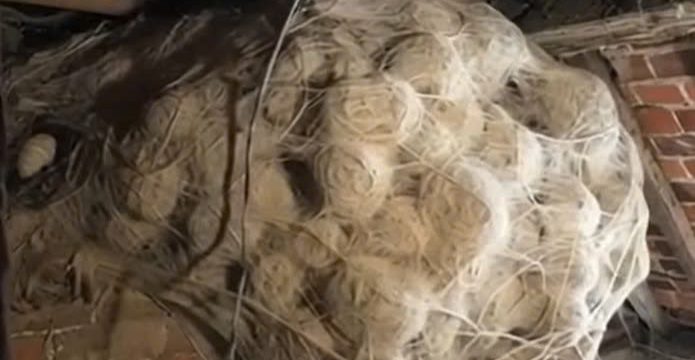The spotted lanternfly (Lycorma delicatula) is an insect that, if you spot it, should be eliminated immediately. Native to China, this invasive pest was first detected in the United States in Pennsylvania back in 2014. Since then, it has spread rapidly, wreaking havoc on both agriculture and natural ecosystems. Lanternflies feed on the sap of various plants and trees, weakening them over time. The problem worsens due to the sticky honeydew they excrete, which promotes the growth of sooty mold, further damaging the plant by blocking photosynthesis.

Identifying the Lanternfly
Fortunately, lanternflies are relatively easy to spot. Adult lanternflies grow to about an inch in length and have a distinctive appearance. Their gray wings are dotted with black spots, and when they open their wings, you’ll notice their vibrant red and black underwings, which make them easy to identify. The younger, immature versions of the insect, known as nymphs, are black with white spots before they turn red as they mature.
These insects use needle-like mouthparts to pierce plant stems and bark, draining the plant’s sap. This process weakens the plant’s overall health and leaves it more susceptible to other stressors. The honeydew they produce leads to a sticky coating on the plant, which fosters the growth of sooty mold. This mold not only looks unsightly but also prevents the plant from photosynthesizing properly, a critical function for its survival.
Why You Should Act Fast
The reason lanternflies are such a threat is due to the broad range of plants they target. Lanternflies feed on more than 70 different species of plants, including grapevines, fruit trees, and hardwoods. For farmers and those in the agriculture industry, these pests can cause significant losses, as they reduce the yield of crops and potentially kill the plants altogether. Their feeding habits weaken trees and crops, making them more susceptible to disease and ultimately reducing their ability to grow and thrive.
Beyond agriculture, lanternflies also pose a serious threat to the environment. Trees and plants in forests and public parks are not immune to the destruction caused by these insects. With no natural predators in the United States to keep the population in check, their numbers can grow quickly, leaving behind severe damage to entire ecosystems if not controlled.
What to Do If You Spot a Lanternfly
If you see a lanternfly, don’t hesitate—get rid of it immediately. The simplest way to deal with adult lanternflies and their nymphs is to squash them on sight. It may sound harsh, but this is a critical step in controlling the population and preventing further spread. Additionally, if you find their egg masses, which resemble gray, mud-like smears on trees, rocks, or other surfaces, it’s just as important to destroy those. Scrape the egg masses into a plastic bag filled with alcohol or hand sanitizer to ensure they are fully eliminated. Each egg mass can contain 30 to 50 eggs, so getting rid of even a few masses can make a significant difference.
The Importance of Taking Action
Controlling the lanternfly population is crucial for protecting both our environment and our agricultural resources. These insects don’t have any natural predators in the U.S., so it’s up to humans to step in and help curb their growth. By acting quickly when you see a lanternfly, you’re contributing to the protection of local plants, crops, and trees.
The economic impact of this pest is significant. Vineyards, in particular, are at high risk due to the lanternfly’s preference for grapevines, which could lead to millions of dollars in losses for wine producers and farmers. Other industries, such as fruit growers and hardwood suppliers, also stand to suffer if the lanternfly’s spread continues unchecked.
In addition to protecting agriculture, stopping the lanternfly is essential for maintaining the health of forests and natural ecosystems. These insects can weaken trees and plant life, affecting the overall balance of ecosystems that depend on these plants for food, shelter, and survival.
Conclusion
The spotted lanternfly poses a serious threat to both agriculture and the environment, and swift action is necessary to prevent further damage. If you see one, act immediately—kill the insect and destroy any egg masses you come across. The simple act of removing even one lanternfly can help protect our trees, crops, and ecosystems from the extensive harm these pests can cause. By working together, we can help curb the spread of this invasive species and safeguard the health of our environment.





